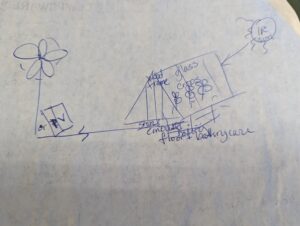Project Overview
Commodities
- Miscellaneous: Basil, chives, oregano, mint, thyme, catnip, rosemary, and salad greens
Practices
- Crop Production: greenhouses, season extension
- Education and Training: farmer to farmer, on-farm/ranch research
- Energy: solar energy, wind power
- Production Systems: organic agriculture
- Sustainable Communities: community development, food access and security, local and regional food systems, sustainability measures, urban agriculture
Proposal summary:
Conventional Greenhouse design (the usual hoophouse with metal
"ribs" and plastic covering) is a poor insulator. They also
do not take advantage of specific heat, ie a particular materials
ability to heat and then retain heat. Some are better than
others, and anything that is conductive (like metal), has low
specific heat, as does air, yet all commercial greenhouses use
air heating and insulation. In addition most are heated by
either electrical wood, or some other frankly monumentally
inefficient system. In additon most farms rely on grid
power which is usually natural gas or coal, greatly contribulting
to greenhouse gases and fuel needs.
Project objectives from proposal:
In the last few years a new technology, called thermal batteries,
has emerged to compensate for the bottleneck of energy storage in
most renewable systems. My proposal in to build a
thermal sand battery in the bottom of my already existing
greenhouse prototype. This battery is non-toxic and
therefore usuable in organic applications. It uses the
concept of specific heat by storing excess energy in the form of
thermal energy in a sand filled concrete "sarcophagus". The
solar/wind will electrocute the sand (like a steel melting
cauldron). Because sand and stone/concrete have high
specific heat, these batteries are showing thermal retention in
the span of months, meaning they will stay hot, heating any soil
around it to temperatures enabling winter vegetable cultivation,
with my greenhouse to retain heat that rises, further
insulating. This project will 1) Use off-grid sustainable
power (wind and solar), 2) Greatly reduce heat/energy loss
through insulation and cutting edge physics, 3) enable year round
growing of vegetables even when temperatures are below freezing
outside.
